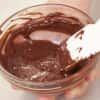Helping Chocolate Keep Its Temper
Traditional tempering techniques can be fussy and time-consuming, so we developed a far easier approach.
Good chocolate right out of the wrapper has an attractive sheen and a satisfying snap when you break it in two. But if you melt the chocolate to use as a coating or for drizzling and try to use it immediately, it will set up into a soft, blotchy, dull-looking mess that melts on your fingers. Why the difference? The short answer is that the crystal structure of the cocoa butter in the chocolate has changed. Cocoa butter can solidify into any of six different types of crystals, each of which forms at a specific temperature. But only one type—beta crystals—sets up dense and shiny and stays that way even at warmer temperatures well above room temperature. When a chocolate is made up of beta crystals, it is said to be in temper. So how do you put melted chocolate back in temper?
FUSSY, OLD-FASHIONED ROUTE
The traditional way is a painstaking process known as tempering. First the chocolate is melted so that all its fat crystals dissolve. It is then cooled slightly, which allows new “starter” crystals to form. Finally, it is gently reheated to a temperature high enough to melt the less stable crystals and allow only the desirable beta crystals to remain (these handily melt—and form—at around 88 degrees), triggering the formation of more beta crystals that eventually form a dense, hard, glossy network.
EASIER, UPDATED APPROACH
For our Florentine Lace Cookies (see related content), we used a far simpler approach: We microwaved three-quarters of the chocolate (first chopped into fine shards) at 50 percent power until it was mostly melted. We then added the remaining chocolate and stirred it until melted, returning it to the microwave for no more than 5 seconds at a time to complete the melting. While not quite as shiny as traditionally tempered chocolate, this chocolate had a nice luster and decent snap. This method works because it keeps the temperature of the chocolate close enough to 88 degrees so that mostly stable beta crystals form and act as seed crystals. It’s a great method when taking the time to carry out true tempering is too much trouble.
IT'S A SNAP: Chocolate that’s been tempered is glossy and breaks cleanly if snapped.
LOST ITS TEMPER: Chocolate that is melted and cooled without tempering will look dull and bend instead of breaking.


